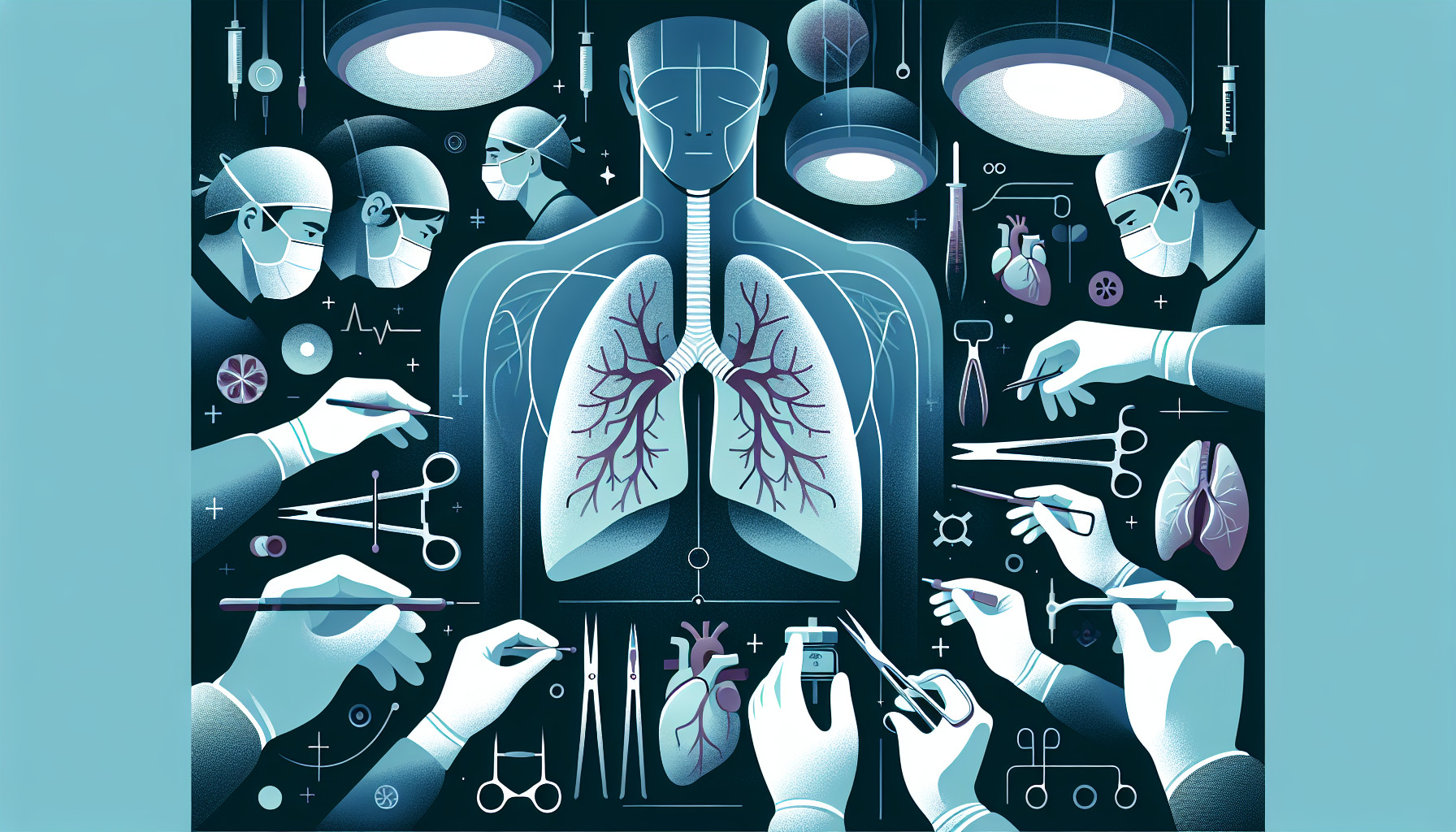Our Summary
This research paper discusses the potential negative effects of long-term use of immunosuppressive therapy, which is a kind of treatment that suppresses or reduces the strength of the body’s immune system, often used after a lung transplant. The main focus of the paper is on the non-transplant related issues that can arise after the procedure, which can significantly affect a patient’s recovery and overall health in the short and long term.
These complications include diabetes, high blood pressure, dyslipidemia (abnormal amount of lipids in the blood), kidney disease, and cancer. The article presents strategies based on scientific evidence for preventing, diagnosing, and treating these complications after a lung transplant.
FAQs
- What are the common nonallograft complications that can occur after a lung transplantation?
- How can long-term exposure to immunosuppressive therapy impact pre-existing medical conditions after a lung transplantation?
- What are some evidence-based strategies for preventing and managing nonallograft complications after a lung transplant?
Doctor’s Tip
One important tip a doctor might tell a patient about lung transplant is to closely monitor and manage any pre-existing medical conditions, such as diabetes, hypertension, dyslipidemia, kidney disease, and malignancy. Long-term exposure to immunosuppressive therapy can exacerbate these conditions or lead to the development of new chronic medical issues. It’s important to work closely with your healthcare team to prevent, diagnose, and manage these nonallograft complications to ensure the best possible outcomes after transplantation.
Suitable For
Patients who are typically recommended for lung transplant are those who have end-stage lung disease that cannot be effectively treated with other medical or surgical interventions. Common conditions that may warrant a lung transplant include:
- Chronic obstructive pulmonary disease (COPD)
- Idiopathic pulmonary fibrosis
- Cystic fibrosis
- Pulmonary hypertension
- Alpha-1 antitrypsin deficiency
- Bronchiectasis
- Interstitial lung disease
Patients who are considered for lung transplant undergo a thorough evaluation to assess their overall health and determine if they are suitable candidates for the procedure. Factors that are taken into consideration include age, severity of lung disease, presence of other medical conditions, and overall prognosis. Additionally, patients must be willing and able to adhere to a lifelong regimen of immunosuppressive therapy to prevent rejection of the transplanted lung.
Timeline
Before lung transplant:
- Patient is evaluated by a transplant team to determine eligibility for transplant.
- Patient undergoes thorough medical and psychological evaluations to assess overall health and readiness for surgery.
- Patient may need to undergo various tests and procedures to assess lung function and overall health.
- Patient is placed on a waiting list for a donor lung.
- Patient may experience worsening symptoms of their lung disease, requiring additional medical interventions to manage their condition.
After lung transplant:
- Patient undergoes surgery to receive a new lung from a donor.
- Patient is closely monitored in the hospital for complications and to ensure proper function of the new lung.
- Patient begins a regimen of immunosuppressive medications to prevent rejection of the new lung.
- Patient may experience side effects from the immunosuppressive medications, such as increased risk of infections.
- Patient undergoes regular follow-up appointments and monitoring to assess lung function and overall health.
- Patient may experience complications related to the transplant, such as rejection episodes or infections.
- Patient may need to make lifestyle changes to maintain overall health and prevent complications.
- Patient may experience improvements in lung function and quality of life following the transplant.
What to Ask Your Doctor
- What are the potential risks and complications associated with lung transplantation and long-term immunosuppressive therapy?
- How will my current medical conditions, such as diabetes, hypertension, or kidney disease, be managed post-transplant?
- What steps can I take to reduce my risk of developing new chronic medical conditions after lung transplantation?
- How often will I need monitoring and follow-up for nonallograft complications?
- Are there any specific lifestyle changes or medications I should consider to prevent or manage these complications?
- What support services or resources are available to help me cope with the potential impact of nonallograft complications on my quality of life after lung transplantation?
Reference
Authors: Thaniyavarn T, Grewal HS, Goldberg HJ, Arcasoy SM. Journal: Thorac Surg Clin. 2022 May;32(2):243-258. doi: 10.1016/j.thorsurg.2022.01.004. PMID: 35512942
